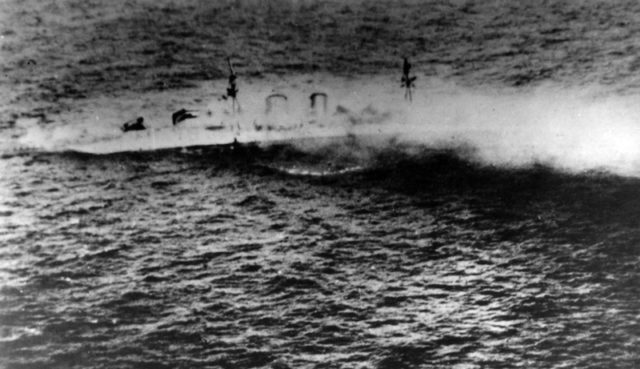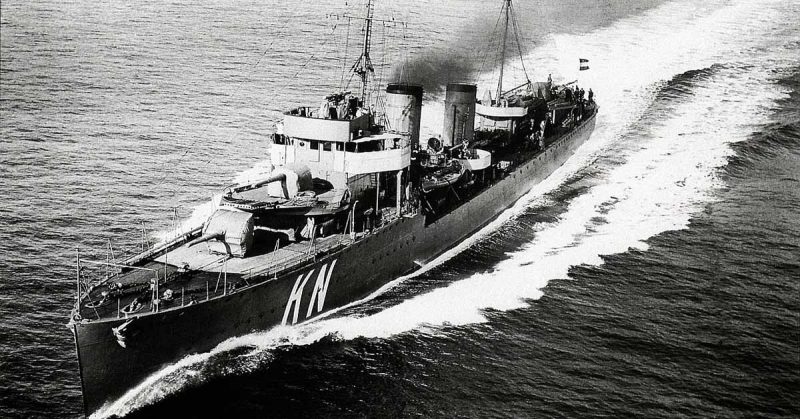The governments of Britain and the Netherlands are investigating the disappearance of several World War II shipwrecks from the Pacific Ocean.
The wrecks were first discovered by divers off the coast of Indonesia in 2002. The sites were declared war graves.
The Dutch Ministry of Defense has confirmed that the wrecks of cruisers HMLMS Java (6,670 tons) and HNLMS De Ruyter (6,545 tons) and destroyer HMLMS Kortenaer (1,316 tons) were found to be missing during an expedition in honor of the 75th anniversary of the Battle of Java. The anniversary will take place in 2017.
Divers found clues to the ships’ locations using underwater photography and sonar. They found that both cruisers were completely missing, and large sections of the destroyer are gone as well.
The British cruiser HMS Exeter (8,390 tons), the destroyer HMS Encounter (1,405 tons), and a US submarine are also missing. The destroyer HMS Electra (1,405 tons) also has been scavenged.

“The Dutch MOD deplores the fact that the ships are gone. After all, we have to treat this matter with care, we are talking about a very important war grave,” said a Dutch Ministry of Defense spokesman.
The Battle of the Java Sea marked the apogee of the Japanese Navy’s power in the Pacific Ocean. British, Dutch, American and Australian ships were all involved in the battle on February 27, 1942. The battle was a disaster for the Allies who lost at least ten ships and 2,173 sailors.
The New Straits Times reported in 2015 that groups of divers were stripping WWII shipwrecks for metal while disguised as fishermen.
They have been stripping two British ships, the HMS Prince of Wales and the HMS Repulse since 2012.
The propellers on the ships are made from phosphor bronze which is worth around $4,700 per ton. Each of the propellers weighs 15 tons.
“The UK government condemns the unauthorized disturbance of any wreck containing human remains,” a spokesperson from the British Ministry of Defense said.
“We have contacted the Indonesian authorities to express our serious concern at this news and to request that they investigate the reports and take appropriate action to protect the sites from any further disturbance.”
International law forbids the desecration of naval war wrecks, war graves, and associated artifacts because of the distress it causes loved ones of the victims.
The British Ministry of Defense is continuing to work with regional governments and partners in order to prevent inappropriate and unauthorized activity on the wrecks of Royal Navy vessels, CNN.com reported.
The British MOD added that a military wreck should remain undisturbed and those who lost their lives on board should be allowed to rest in peace.
